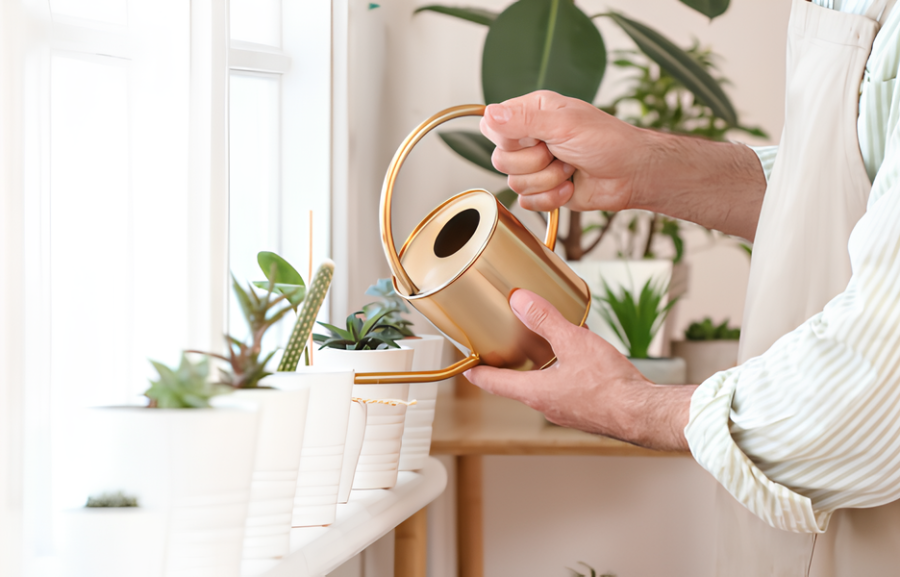29.09.2025
Water for Indoor Plants
Find which water suits indoor plants best and what you should avoid

Which water is best for watering indoor plants?
Proper watering is not only about regularity but also about the quality of water. It determines whether plants will simply survive or grow and bloom actively. Let’s look at the different types of water and how they affect plants.
Tap water
Most often we use regular tap water. The advice to “let it stand” in an open container is familiar to many. During this time, chlorine partially evaporates and some impurities settle. The result, however, depends on the original quality of water, which varies greatly by region.
Distilled water
It contains no salts or trace elements at all. On the one hand, this protects plants from excess impurities, but on the other, it deprives them of nutrients. Constant watering with distilled water is not recommended: it’s better to mix it with mineral or tap water.
Bottled water
Table mineral water, purified by the manufacturer, is suitable for plants. However, it’s not the most practical choice: it requires extra expenses and plastic disposal. Medical mineral water should be avoided — the high concentration of salts can damage roots.
Carbonated water
Not recommended. Carbon dioxide used for carbonation disrupts proper root respiration.
Filtered water
The most convenient and safe solution. A filter removes chlorine and harmful impurities, softens water, and makes it suitable for most plants. Systems with mineralization help maintain the right balance of microelements.
Other options
- Aquarium water can be useful if it’s clean and the fish are healthy.
- Rice water contains starch and microelements that benefit the soil.
- Sweet water is sometimes used as a mild fertilizer: sugar stimulates the growth of beneficial microorganisms.
Practical tips
- Avoid very cold or hot water: it stresses the roots.
- Before buying a new plant, learn about its recommended watering schedule.
- In summer, plants need more moisture, while in winter they consume less, as many go into dormancy.
